Galapagos Conservancy supports research on Galapagos penguins as part of its efforts to better understand this species and give us better tools for conserving it. These collaborations resulted in a publication entitled Penguins at the Equator, published by the Center for Ecosystem Sentinels. It was also published by the Galapagos National Park Directorate and the Global Penguin Society.
According to Dr. Jorge Carrion (Conservation Director at Galapagos Conservancy) and Conservando Galapagos Foundation penguins are particularly sensitive to changes in the environment. Penguins are considered sentinel species. This means that they can provide timely and valuable information to help determine if there have been ecological changes in their ecosystems. It is therefore important to consider its conservation priority and research.
The publication emphasizes several important aspects, including the fact that it is difficult to determine the population size of Galapagos Penguins because they spend so much time searching for food at sea. They hide in lava tunnels while searching for food when they’re on land. Because juvenile penguins are also present, it is possible to determine if they have successfully raised their chicks in lava tunnels. The population of juvenile penguins was less than 1% in 2015/16 during El Nino (the warming of the waters) and more than half of it during La Nina (the drop in water temperatures). To determine the health and physical condition of the penguins, scientists took measurements. To track penguins, some were given small numbers of stainless steel tags placed between their left leg claws.
Since 2000, the IUCN Red List of Endangered Species has listed the Galapagos Penguin as an endangered species. This is due to its small distribution and population size. A 2009 population census revealed that the number of Galapagos Penguins worldwide was between 1,800 and 4,700. The research also revealed that the most serious threats to Galapagos Penguins include climate change, oil contamination, plastic waste, nylon nets that can catch penguins, introduced mosquitoes and invasive species like rats, cats and dogs.
Galapagos Conservancy must continue to collaborate on conservation of this species according to Carrion. This is not only because it is endangered and under threat, but also because of its ecological value and importance, which makes it an important bioindicator.
Eighty people participated in the workshop and learned about the management and technology used by private and public companies in Ecuador. They also learned about the more popular solid waste management systems in other parts of the world. Experts from local, national and international were present. Solid waste management refers to the collection, treatment and disposal of discarded material. In recent years, movements have been made to make these processes environmentally-friendly, with more recycling and composting programs being introduced.
The technical discussion saw the participants engage in technical discussions with Galapagos residents to improve the decision-making process at both the public and private levels. This will ensure that Santa Cruz has a waste management system that is optimal.
Washington Tapia is the General Director of Galapagos Conservancy, and Conservando Galapagos. He explained that proper waste management at each stage after its generation has negative effects on the environment and human health.
Santa Cruz estimates that each month the island produces an average of 63 tonnes of organic waste, 89 tons of recyclable waste and 117 tons of nonrecyclable waste. As a result, it becomes increasingly important to have the most ecologically-productive waste management practices in place.
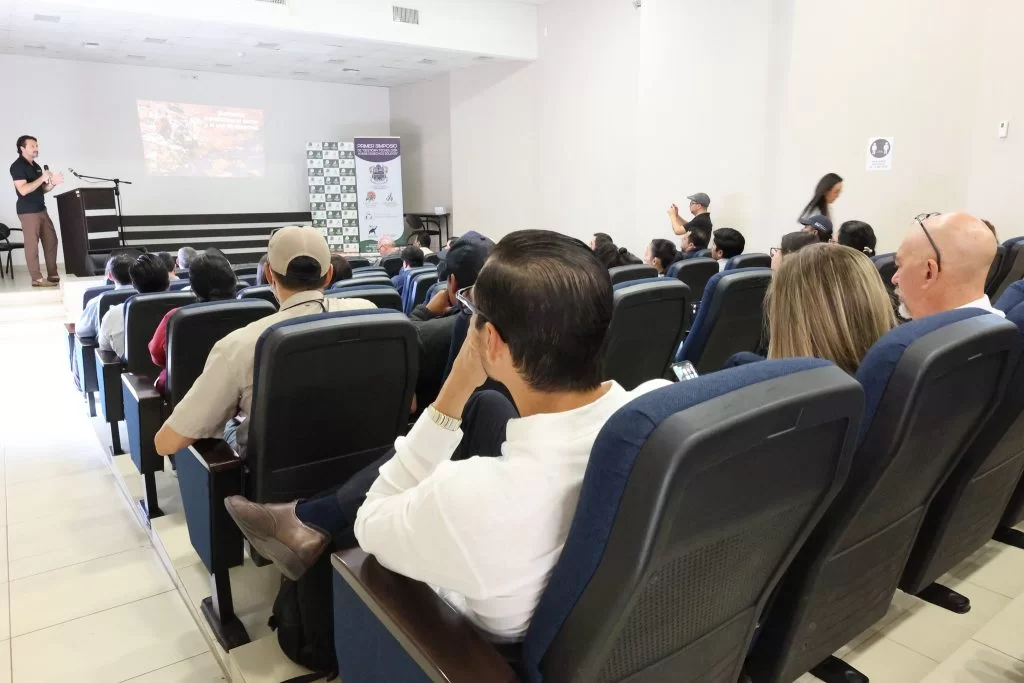
I Waste Disposal Symposium © Galápagos Conservancy
Galapagos Conservancy President, Dr. Paul Salaman, stressed the importance to continue the joint work with the GNPD. Veronica Santamaria (Director of Public Spaces for the Park), said that it was an honor to participate in events such as this, where the Galapagos Islands conservation efforts are acknowledged. She stated that the collaborative management model has been a model for other countries and that they need the support to maintain the health of the Galapagos ecosystems.
Veronica also reported on progress made toward the Galapagos National Park’s first Visitor Center. This will be completed in 2023, with support from Galapagos Conservancy. The Center will be accessible to all ages and circumstances, and it will be situated next to the Symbol of Hope Hall where Lonesome George can also be seen. Through interactive 3D panels, visitors will gain a better understanding of conservation expeditions undertaken by park rangers or their aides,” Veronica explained.
In his remarks, Dr. Jorge Carrion (Director of Conservation for Conservando Galapagos) highlighted the efforts made by the Ecuadorian Government. He also thanked donors for their support. These conservation allies are vital for the preservation of Galapagos biodiversity. Galapagos Conservancy is forever grateful to all those who support conservation efforts in the Archipelago.
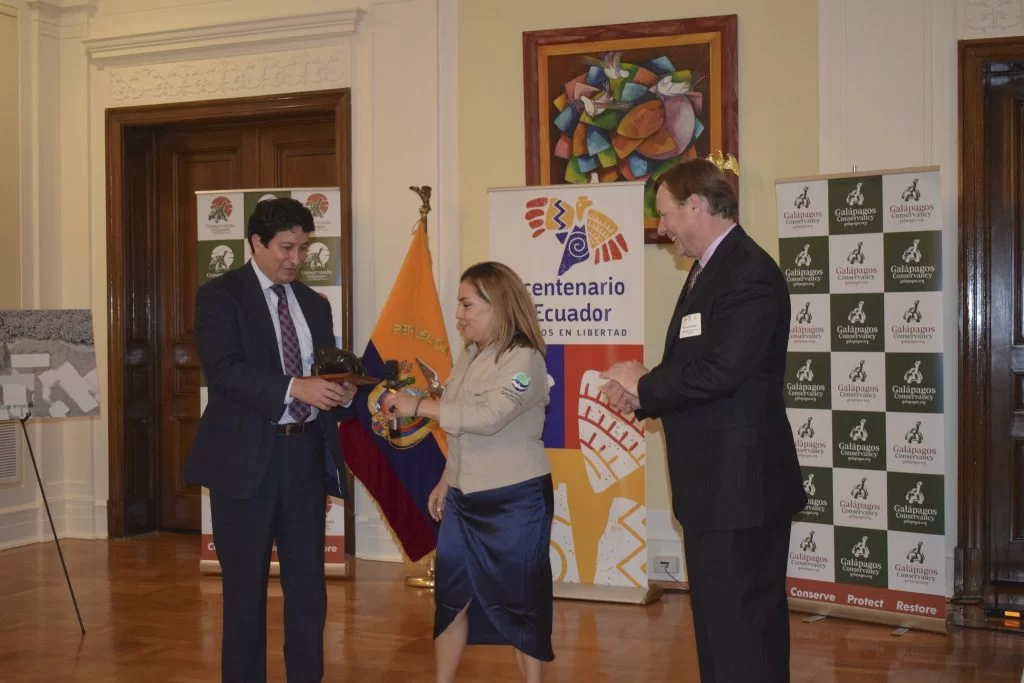
Embassy Event 2022 © Ecuadorian Embassy in DC
Pablo Escarabay is a young Galapagos resident who was a beneficiary of a Galapagos Conservancy Action Grant and began an intense search for the Vermilion Flycatchers after people reported seeing them in the wild.
He was able to form a solid research team with Diana Calderon. Pablo stated that they are organizing daily group hikes and conducting frequent search camps to find the Vermillion Flycatcher. We are optimistic as there have been reports of sightings of the iconic Galapagos bird.
To attract the witch-bird, the team uses modern technology such as acoustic recordings that record bird sounds and are placed in search areas’ trees. To capture film evidence, they have placed camera traps at strategic locations. Pablo emphasizes that the community, particularly the San Cristobal farm owners, must participate in the identification and capture of search areas. Their support is crucial to this process.
The camera traps have captured many species of birds, including flycatchers and finches, as well as owls and Smooth-billed Ani. They all seem to be attracted by the sounds of birdsong.
Experts recommend identifying strategic areas that provide the Vermilion flycatcher with ideal habitat. These areas should be identified by farm owners who have reported sightings of the animal in recent years. Pablo said, “We will continue to exhaust every resource and effort to corroborate these sightings. In the meantime we remain optimistic that the San Cristobal Vermilion Flycatcher won’t [remain] on the list of extinct species.”
The Galapagos Vermilion Flycatcher is an endemic species. There are two subspecies. One, San Cristobal has been declared extinct by IUCN. Another, a. This bird can be found on more than ten Archipelago islands, apart from San Cristobal. Unfortunately, it has suffered a rapid decline and has been designated as vulnerable by IUCN.
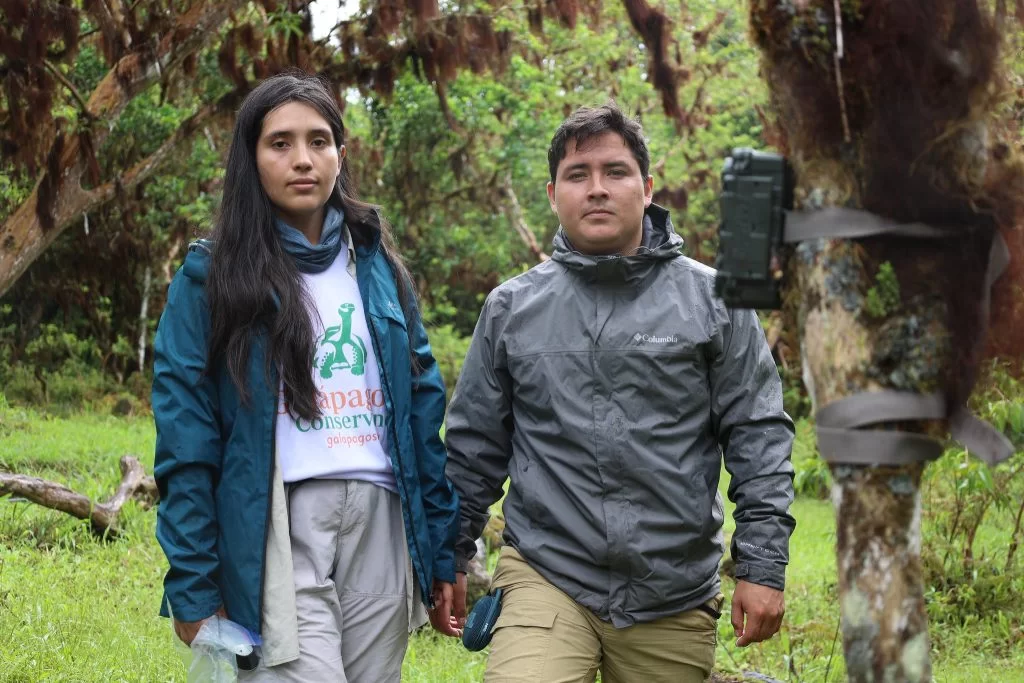
Pablo Escarabay and Diana Calderón searching for Vermilion Flycatcher © Galápagos Conservancy
Galapagos Conservancy was honored to support the ABG’s work and congratulate the 171 dedicated professionals and staff members at its 10th anniversary celebrations on Santa Cruz Island. Washington Tapia (General Director of Conservando Galapagos), an affiliate of Galapagos Conservancy spoke at the anniversary ceremony. He stated that the ABG was an indispensable institution in order to ensure the preservation of Galapagos biodiversity. Invasive species are complex problems that require constant attention.
The ABG was created by presidential decree in October 2012 and is now attached to the Environmental Ministry. Its mission is to regulate, prevent, reduce, and control the risk of exotic organisms entering, migrating, or dispersing in Galapagos by all means that could endanger the economy and human health.
Galapagos Conservancy has reached an agreement with the ABG to strengthen control measures and prevent the spread of the Giant African Snail (). This snail was introduced in 2010. It is one of the most dangerous introduced species. It can cause serious damage to crops and can transmit meningitis-causing parasites. “We cooperated in delivering two canines that are specialized for inspection and control to strengthen the canine brigade. This was done in order to increase efforts against Giant African Snails. Tapia stated that this includes training and training five ABG officers to guide the dogs.
Tapia said that the world is focused on Galapagos conservation. “Here, we find a high level of endemism, leading this archipelago be considered as a major natural treasure site for humanity.” We congratulate all ABG members for their outstanding efforts to preserve Galapagos biodiversity, and to contribute to its local population.
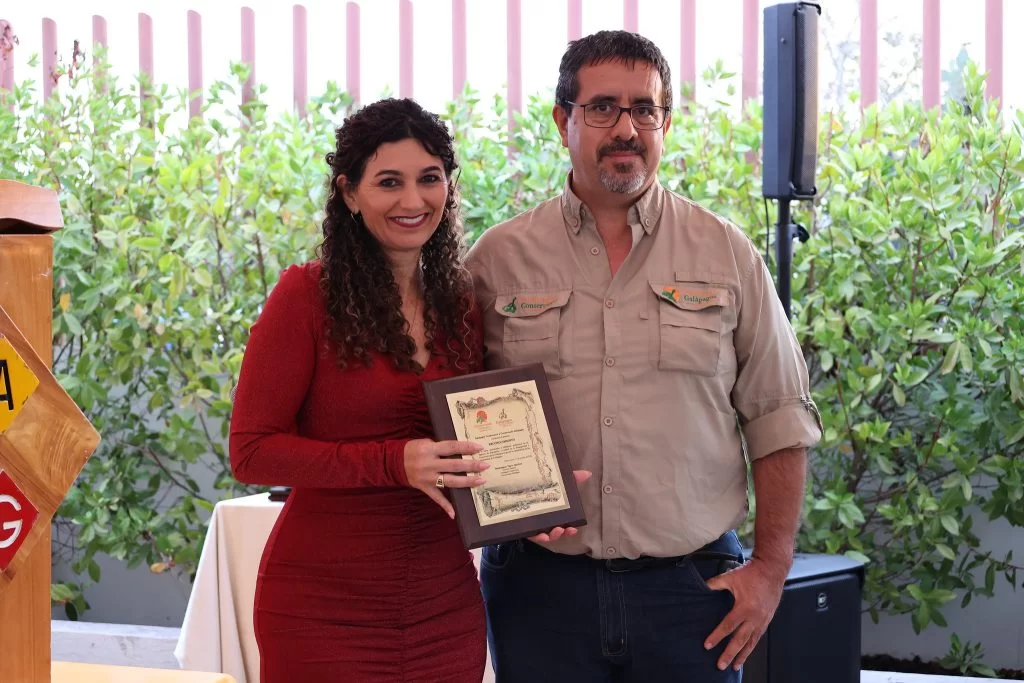
Director of Conservando Galápagos, Washington Tapia presenting an honor to ABG © Galápagos Conservancy
Galapagos Conservancy has supported the work of Cecilia Alvear Women’s Organization on San Cristobal Island (OMCA), since March 2022. This organization was started in 2001 by wives of fishermen who wanted to make a difference in their families’ lives. We do this to support the socioeconomic well-being and cultural advancement of the 24 members of this organization. Any woman within the community is welcome to join the organization. Some members are directly involved in marketing their products, while others work in handicraft production. They also receive training in expanding their product range.
Carmen Marquez, one of the founder members of OMCA, said that they have had to struggle a lot over the past 21 year to be heard by the community and to fight against the machismo which places women in a lower social position. She stated that they have made progress with determination, perseverance and effort. They are now able to improve themselves and make a positive impact on our community and families.
OMCA has partnered with Galapagos Conservancy to implement a project that provides training in bracelet weaving and fabric recycling. It also offers handicraft manufacturing and marketing skills for its members.
Fanny Munoz, who is a member, said that they have gained knowledge and experience over the past 20 years that has allowed them to enter into the labor market. This experience is now being shared by the women of San Cristobal Island. Fanny stated that the training is designed to help any woman feel her rights are being violated.
Galapagos Conservancy support allows for the maintenance and repair of a boat. This boat can be used to sell handicrafts made by OMCA members. Carmen explained that the boat used to sell our handicrafts has seen a lot of wear and tear over the years. But, thanks to the Galapagos Conservancy’s support, the crew was able to complete all necessary work to make the boat new for all members.
We will achieve gender equality and economic growth by investing in women’s economic empowerment. Galapagos Conservancy supports the efforts of 24 OMCA members, who play a vital role in the Galapagos Islands’ economy.
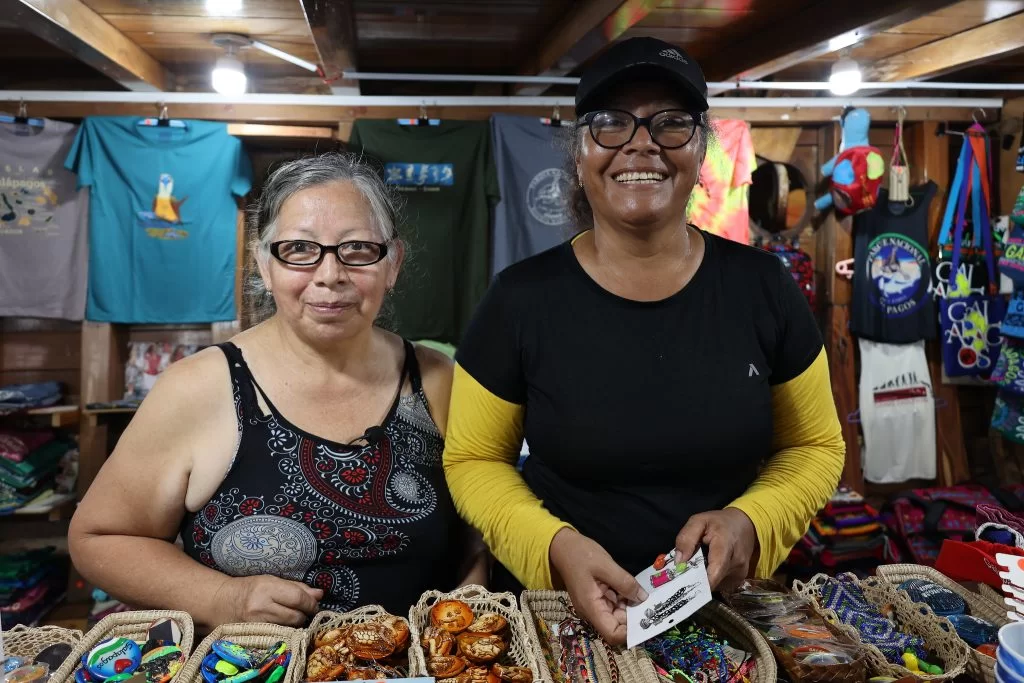
Members of OMCA Women © Galápagos Conservancy